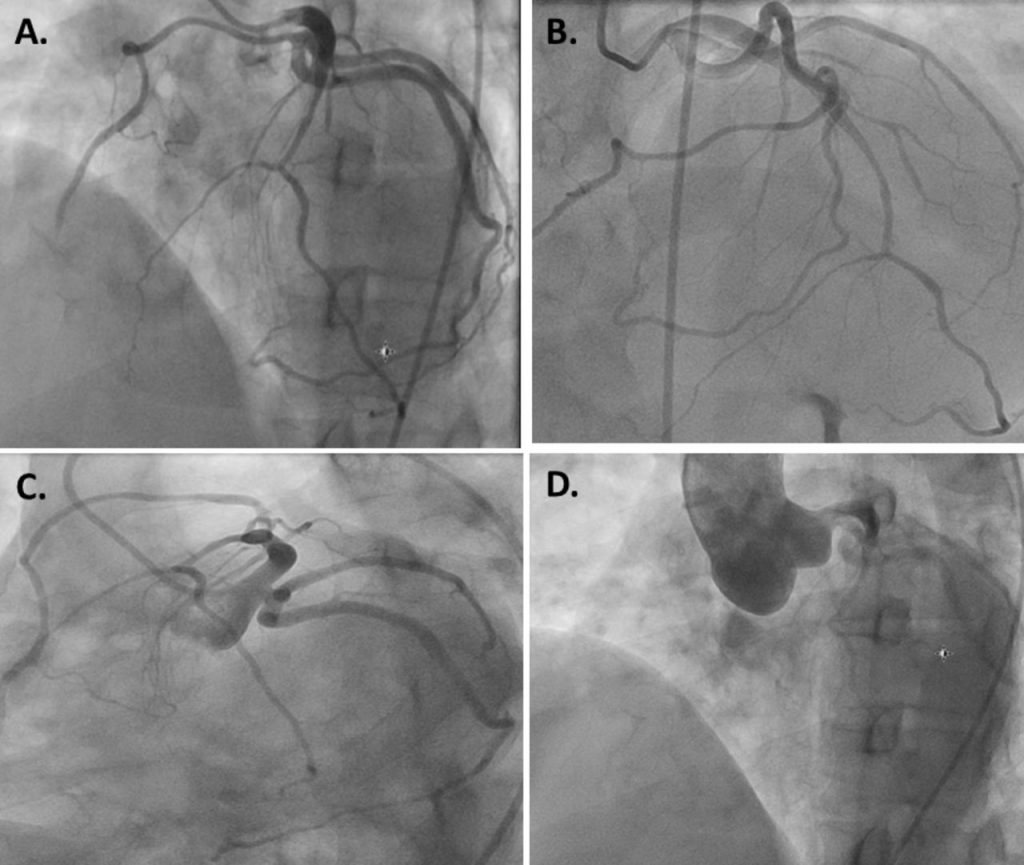Coronary Angiography at Best heart clinic in Mumbai
The coronary arteries are responsible for supplying blood to your heart. The buildup of plaque in your coronary arteries can narrow your arteries or block them altogether, restricting the blood flow to your heart. The blocked arteries and other coronary artery diseases are detected with X-ray imaging. The doctor might also unblock the narrow or blocked arteries during the angiogram. Cardiac catheterization or angiography is safe. These are the minimally-invasive imaging tests that show the functioning of your blood vessels and treat blocked arteries without requiring open-heart surgery.
Angiography is performed to identify the cause of chest pain, pain in the neck and arm, a chest injury, a heart defect, and a problem in your heart valve. It is considered the last resort when the other non-invasive imaging procedures fail to detect the underlying cause of the heart disease. A coronary angiography shows the number of arteries blocked by plaque and locate the exact areas where blockage is detected.

Experienced Cardiologist
10,000+ Angiographies
What Happens During the coronary angiography procedure?
Angiography is performed under local anesthesia. You are asked to lie on a narrow table. You are sedated during the procedure so that you don’t feel the pain in your wrist or groin. The doctor makes a small incision on your wrist to insert a catheter. It is moved up to the blood vessels in your heart. The doctor then injects the dye that’s visible in an X-ray imaging. You feel a sense of warmth when the doctor injects the radiopaque contrast agent (dye) into your bloodstream.
The X-ray will produce pictures of your blood vessels as the dye moves through your arteries. Once the images are collected, and the doctor has identified the narrowed and blocked arteries, they will remove the catheter and apply pressure to the area. It is mostly performed in an outpatient setting, and the procedure is completed within an hour.
Healing after the Coronary Angioplasty
Once the procedure is over, the doctor will take you to the recovery area. They will apply pressure to the area where the catheter was inserted and do the dressing. Chances of bleeding are high if the catheter was inserted through your groin. You must lie flat on the table for several hours. During this period, a nurse will put manual pressure at the site to stop bleeding. Whether you can go home the same day depends on the findings. If the report doesn’t indicate a serious problem, your doctor will most likely let you go home (if stent was not used).
Mild bruising and tenderness at the site of operation are normal. They will last a couple of days. Based on the reports, the doctor will decide whether you need bypass surgery to get the blood past the blocked arteries.
Do not drive after an angiography. It’s best to call someone to come and pick you up from the hospital after your discharge. Ask the doctor when you can resume your regular chores. You need to restrain yourself from strenuous activities that put pressure on your chest. Avoid swimming, running, and physical exercises for the first few weeks. You may also need to avoid medications until your doctor says it is safe.
Are there any Complications in coronary angiography?
Note that angiography is a minimally-invasive procedure that carries a few risks. You should discuss your medical history or the current medications you are taking with your doctor before going ahead with the procedure. Although serious risks are uncommon, a few side effects can be noticed after the procedure. Here are the possible complications from coronary angiography:
- Mild bruising and swelling at the site
- A serious allergic reaction from the dye injected into your blood vessels or imaging tools used during the procedure.
- Bleeding
- Heart stroke
- Injury to the arteries
- Reduced kidney functioning
- Infection
Your doctor will discuss these risks before performing the procedure. They will also ask you to sign the consent form.
How to Prepare for Coronary Angiography?
A patient might need angiography on an emergency basis. But, most commonly, your doctor gives you a few days to prepare for the procedure. Your doctor takes your blood test a few weeks before angiography.
If angiography is scheduled a few weeks following your appointment with the doctor, your doctor will give you instructions on how to prepare. If you are currently on blood-thinning medications, you need to stop them at least 3 days prior to the test. Although detailed instructions are provided by the healthcare team, here are the general tips:
- Avoid drinking transparent fluids two hours before the procedure
- Don’t eat anything for six hours before angiography starts
- Don’t take any medication without asking your cardiologist
- Remove any jewelry during the procedure and put on a hospital gown
Call your doctor immediately if you notice the symptoms of fever, sudden bruising, bleeding, inflammation, and any discomfort at the incision site after several days of angiography.
Request Appointment
Request an appointment with us to know more about angiography procedure and if you do require an angioplasty
